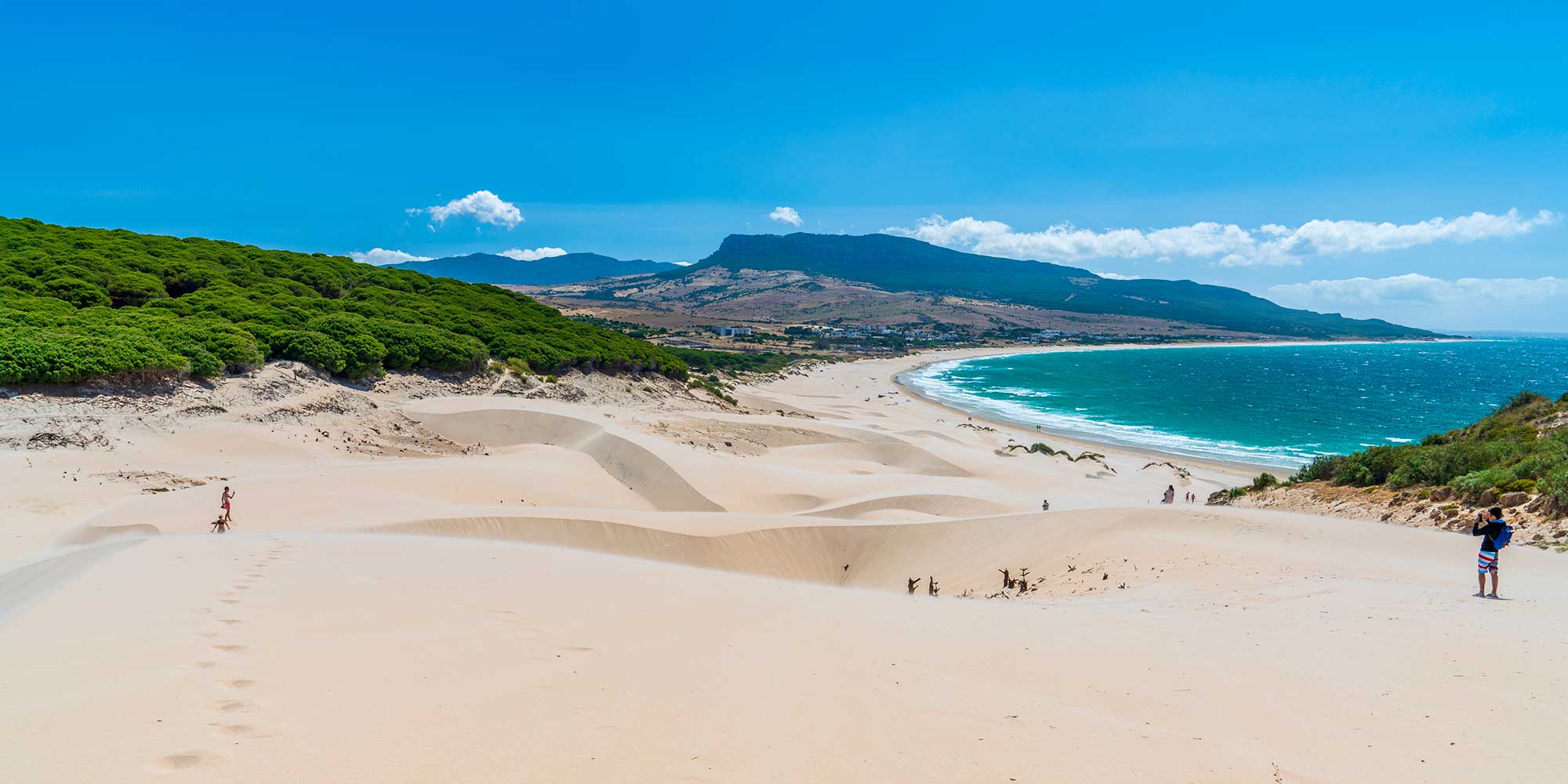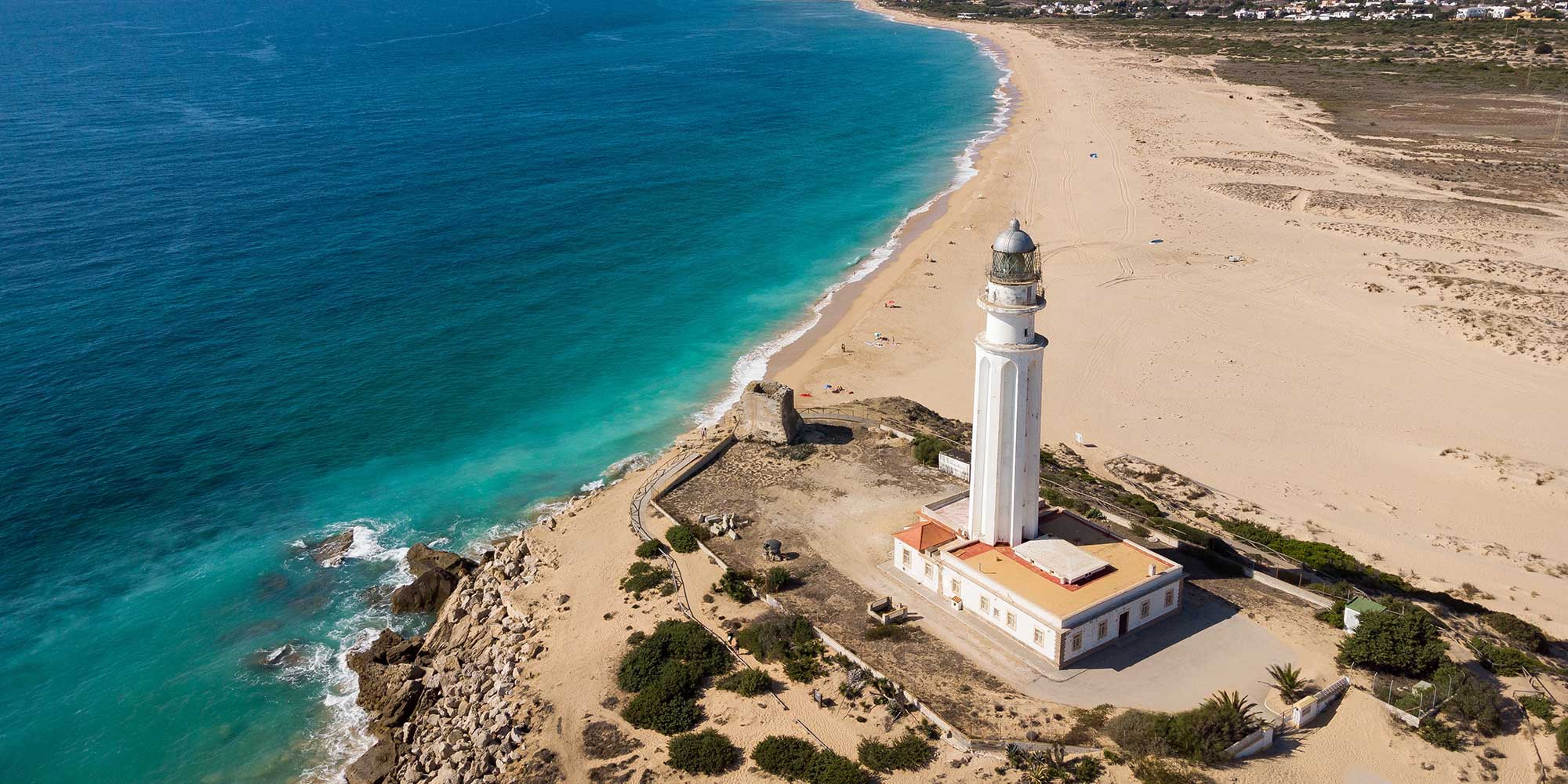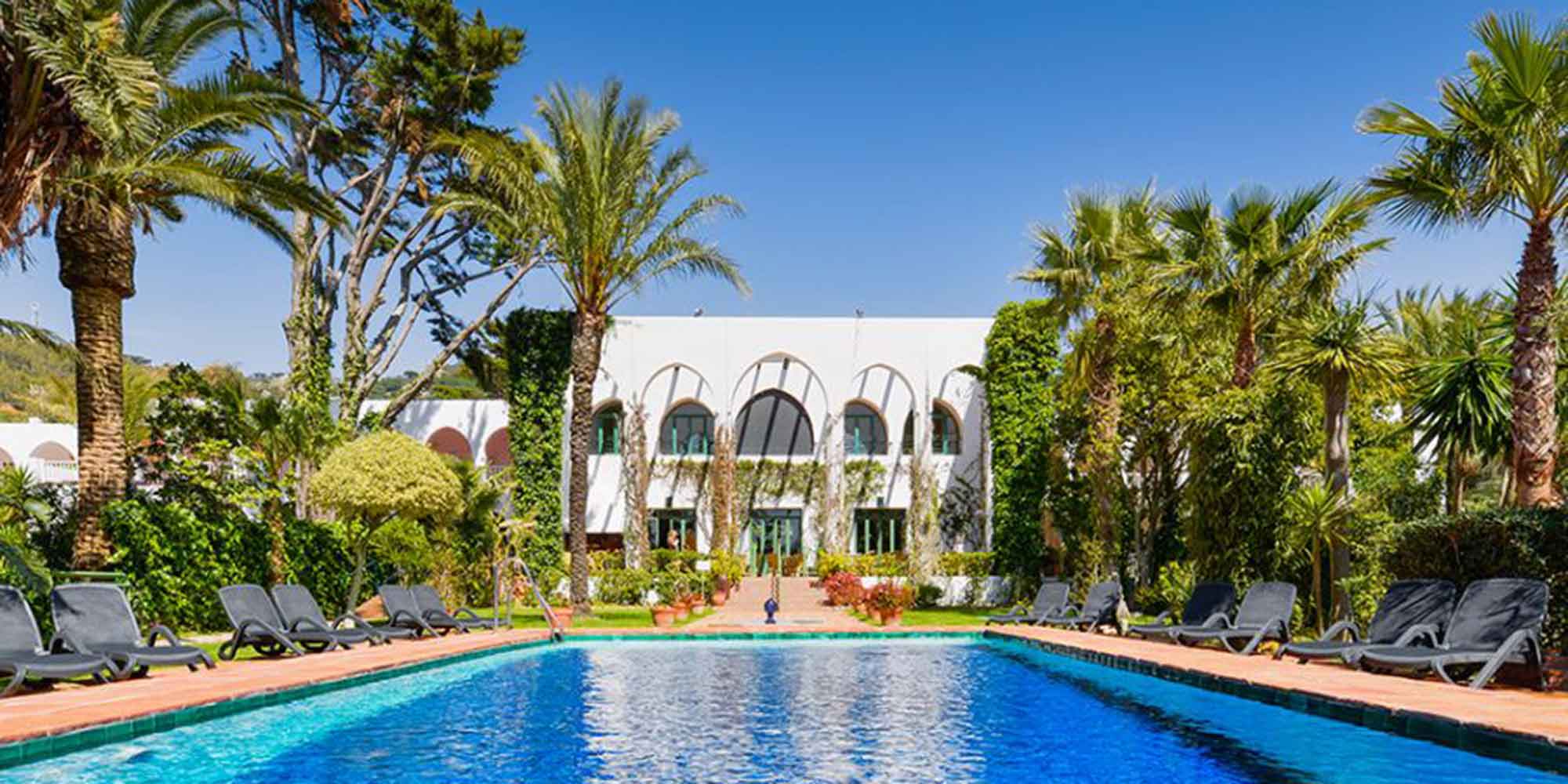
Get a year of super-useful advice
Who to book with, how to get the best deals plus inspiring destination ideas from the experts, for only £36.75 for the year – that’s 25% off.
Join Which? TravelOffer ends 8th January 2026

If you live on the Costa del Sol, where do you go for a day at the seaside?
The answer, according to Nacho Barrionuevo, is two hours west, to a small village called Bolonia.
'The sand is softer here,' he explains. 'It's a lot more comfortable to lie on. When I was a kid, living in the middle of Malaga, we always used to come here.'
In fact, many of the beaches on the Costa del Sol are made up of gritty sand imported from the Sahara.
Here, in sleepy Cadiz province, nobody has been shifting lorry loads of sand down the narrow lanes to the beach. It came here the way it's supposed to, carried over millennia by rolling Atlantic waves that crushed it into that fine, invitingly soft powder.
Apart from being a beach connoisseur, Nacho is a self-confessed bird nerd and wildlife expert. I've taken one of his Birding The Strait tours to see the natural beauty along this coast, as much as to catch a glimpse of the great migrations across the straits of Gibraltar.
During my visit to Bolonia, long before the summer season, there's nobody lying on the sand. There's nobody here at all except a small, round bird with long, spindly legs that Nacho tells me is a Kentish plover. Behind us slopes a 30-metre-high dune - the biggest in Spain and, next to that, the remains of a Roman settlement, Baelo Claudia, once one of the most important on the coast.
This article first appeared in Which? Travel magazine. We don't accept freebies from travel companies, airlines or hotels, so you can be sure our destination reviews are completely honest.

Who to book with, how to get the best deals plus inspiring destination ideas from the experts, for only £36.75 for the year – that’s 25% off.
Join Which? TravelOffer ends 8th January 2026
This part of Spain, stretching from the Portuguese border in the west to Tarifa in the east, is known, to the local tourist board at least, as the Costa de la Luz. If the name is unfamiliar it's because British visitors, Kentish plovers aside, have always favoured the Costa del Sol. The towns and villages here aren't visited enough to make it on to our best Spanish seaside towns list.
However, if you don't mind the waves - the sea is the choppy Atlantic rather than the warm, gentle Mediterranean - this part of Spain is far more appealing. Where other Spanish coasts have witnessed untrammelled construction, with a ribbon of grey concrete running along a huge stretch of the Costa del Sol, here the beaches back on to dunes or forests, national parks that run wild with rare animals such as the Iberian lynx and the abundant birdlife that attracted Nacho.
I lived in Alicante on the Costa Blanca for years, and I've spent a lot of time on Spain's other coasts, but I don't think I've been anywhere quite like Bolonia, a traditional beach holiday destination with so much ancient history, nature and culture so close to hand. As long as you avoid August - when Spanish tourists come here en masse, fleeing temperatures of 40°C or more just an hour or so inland - there's plenty of space, too. But if you want somewhere even wilder, just take a trip a little further down the coast.
Book your next car hire in Spain with Which? Recommend Provider, Zest

I'm the only person to get off the bus at Los Caños de Meca, about an hour from Cadiz, where I've been staying. It's late afternoon and the dusk gives the whitewashed houses a pastel glow.
My first thought is: where is everybody? I was expecting a small village but this is more like a collection of houses tumbling towards the sea. On one side of the narrow coastal road, a couple of dust tracks lead up into forested hills. On the other side, beyond the houses, sand dunes roll down to the beach. I'd been recommended Caños de Meca by a friend from Cadiz who told me that, in the 80s and 90s, its wild beauty meant it was the great hippy hangout of the coast. In those days, travellers would drive straight onto the sand in their camper vans, pull out guitars and sound systems and party all night. Now there's a wooden barrier to stop you being able to drive onto the beach. Too much peace and love was crushing all the rare grasses and flowers.
After leaving my bag at one of the couple of inexpensive hotels along the main road, I walk down to the beach over the boardwalks that now protect the flora that clings to the dunes; gnarly juniper and twisted mastic trees, spiky marram grass and pink and yellow crocus.
Beyond the dunes the beach stretches out before me for miles. At one end there's a lighthouse, its powerful beam sweeping from the darkening ocean across the dunes and back again, picking out nobody but a handful of dog-walkers heading back up the boardwalk to the village. I walk to the lighthouse along the shoreline, leaving a single row of footprints in the otherwise virgin sand. By the time I reach it, the red of the sunset is fading but I can still pick out the words of a memorial plaque on a jagged rock. It says, roughly translated, 'Before long, men must convince themselves that it is a madness to make such terrible wars, and there will come a day when they will embrace each other, all agreeing to form only one family.'
The war that the writer - Benito Perez Galdos - was lamenting is the Battle of Trafalgar. If I'd stood on this same spot just before lunch on 21 October 1805, I'd have seen the sails of Nelson's navy, advancing in two terrible columns, pillars of smoke rising into the air as they exchanged cannon and musket fire with the French and Spanish ships. There's a poignant contrast between the cracked, almost illegible plaque here - and Nelson's triumphant column in London.
Now, 220 years later, Caños de Meca is the perfect little beach town, with the emphasis on beach. This village is dwarfed by the sea and the hills all around it. It's the place for hikes up through the forest of stone pine trees with tight, oval crowns, so perfectly symmetrical they look like they belong in a picture book; along windswept cliffs and down into sheltered coves. However, when I explore the bars and cafés along the front there's still a strong sense that this place has its own, distinct identity.
The alternative spirit of Caños de Meca lives on at places like La Borracheria. It's a bar that's little more than a garage with a few sherry barrels rolled inside, a couple of tiny tables with red-and-white plastic tablecloths, and a small speaker blasting out Madonna and other pop hits, turned up enthusiastically by the patrons when anything good comes on. It's standing room only with a party atmosphere, despite the fact that I count just 10 of us in there, including the owner, rapidly pouring drinks and preparing sandwiches of local cured meats behind the bar. Borracheria is not an easy word to translate but essentially means 'the place to get drunk', and a few of the locals have taken the name to heart. When I mention to one of the drinkers what I'm doing here they insist that this is still the hippy part of the province, even though the area is changing. 'Tarifa is the new Marbella,' they say. 'That's where the money and all the beautiful people are. But Caños de Meca still has the hippy spirit.' I can believe this, particularly when, after he leaves, the owner mutters, 'He's done a simpa again." Translation: he's left without paying.

The news that Tarifa is now 'the new Marbella came as a blow. That's where I'm heading next, to enjoy something that's almost unique in Spain - hotels that are right on the beach. I remember Tarifa, a town of around 18,000 people at the southernmost tip of Spain, as a relaxed, fairly inexpensive place, rather than somewhere for the yachting set.
I don't plan to hang out on any superyachts, and, a 10-minute drive out of town, Los Lances beach - one of my favourite places in Spain - is unchanged. I first came here 10 years ago, and there are still three small hotels spread out along about a kilometre of the wild, unspoilt sand - Hotel Hurricane, Hotel Dos Mares and Hotel Arte Vida. In most parts of Spain there are, quite rightly, strict rules about building next to the beach. However, these low-rise buildings, with between 11 and 30 rooms each, blend discreetly into the surroundings, half hidden by the palms, with almost no traffic noise, and no other buildings at all nearby.
Hotel Dos Mares has its own windsurfing school. Hotel Arte Vida is party central, with a younger crowd, but Hotel Hurricane is my favourite. For many, the big attraction is its stables and riding school. The sight of horses trotting along the shore, parallel to the white horses of the surf, is a familiar one here. But you don't need to ride to love it. From my bedroom I can look out through fern leaves, cedar and palm trees to catch a glimpse of the Atlantic at the bottom of the garden. Stepping out, past the two outdoor swimming pools, there are steps that lead to Los Lances Beach. Across the water, just 14 kilometres away, rises the mass of the Atlas Mountains in Morocco.
The beach itself stretches in an endless golden strip in both directions, with jagged sandstone cliffs behind it, providing shelter against the breeze. The name Hotel Hurricane is - in part - a joke but it's also a wry acknowledgement of why the Costa del Sol crowd aren't hammering down its doors for a room. The narrow straits of Gibraltar do act like a wind tunnel, meaning Tarifa is the greatest place in Spain for kitesurfing and windsurfing.
However, it's worth putting up with a bit of a breeze for the natural beauty on this part of the coast. A huge amount of wildlife is also funnelled through that 14-kilometre gap between Europe and Africa, making it one of one of the world's great spots for nature lovers.
I walk along the cliff near the hotel and look out for some of the bird life that Nacho taught me to spot around here. There's a rock thrush, its dark blue chest thrust out as it pecks for insects, and high up on a cliff - spreading its wings in the sun - a griffon vulture. Come here in the spring and autumn and you can see the skies darken with flocks of raptors, such as eagles and vultures, that you'd never normally catch in such large groups. They wait on either side of the Strait, lining the cliffs and the hills, until the wind is right to help them make the dangerous journey across. The seas here are teeming with dolphins and whales. Enormous schools of bluefin tuna make their way from the Mediterranean to the Atlantic. There are tours for both whale watching and to see the almadraba, the traditional way of catching tuna in nets that's been practiced since the Phoenicians.
At dinner I try some of that wild bluefin tuna. It has a rich, luxurious taste that bears the same relation to tinned tuna as steak does to a Travelodge sausage. In hotels with a great view, or perfect surroundings, you can often forgive them if the food's not great. It would seem understandable. That the food here is so good - as well as everything else - feels like a massive bonus.
Most people head to the Costa del Sol for the beaches. But, as Nacho says, the beaches on the Costa de la Luz don't just have fewer tourists, they're better all round. If you simply want to lie on the sand, then my suggestion is the soft beach of Bolonia. If you want to experience the seaside of southern Spain at its wildest and most beautiful, you could choose almost anywhere on this long strip of coast.
And the beauty of the Costa de la Luz is not just the sun and the sand. You can find that all the way around southern Spain. It's the natural beauty, the history and culture. Like the Kentish plover we spotted picking its way along the sand at Bolonia, I'll have to head north again soon, but I'll definitely be back.